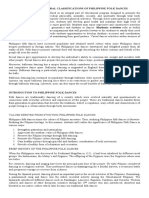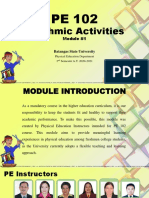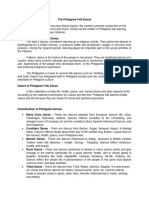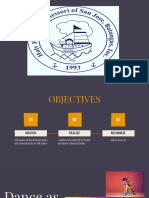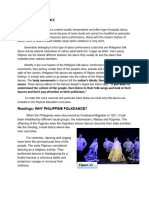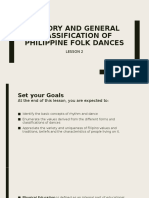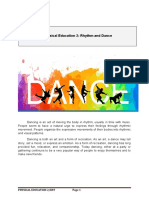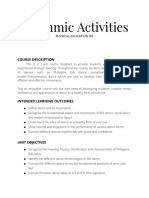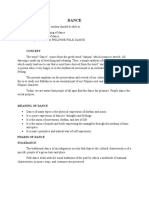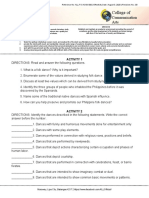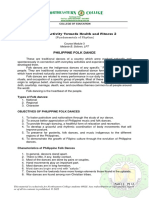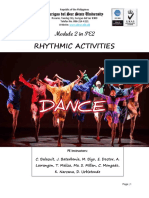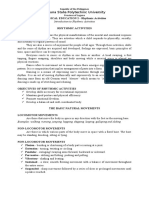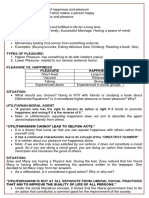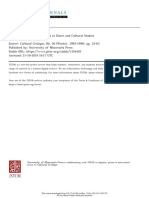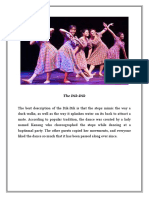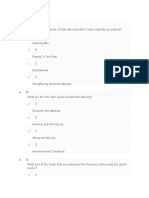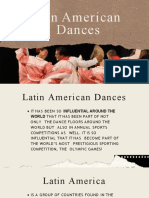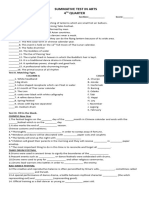0% found this document useful (0 votes)
286 views2 pagesPhilippine Folk Dance Guide
This document provides an overview of physical education with a focus on rhythmic activities, ballroom dancing, and Philippine folk dances. It discusses important features of dance, kinds of dance including folk dance and social dance. It also describes the classification of Philippine folk dances according to location, nature, and groups found in the Philippines. Key figures in Philippine folk dances mentioned are Francisca Reyes Aquino, considered the "Mother of Philippine Folk Dances" for her efforts in collecting and propagating folk dances.
Uploaded by
John Fernand RacelisCopyright
© © All Rights Reserved
We take content rights seriously. If you suspect this is your content, claim it here.
Available Formats
Download as DOCX, PDF, TXT or read online on Scribd
0% found this document useful (0 votes)
286 views2 pagesPhilippine Folk Dance Guide
This document provides an overview of physical education with a focus on rhythmic activities, ballroom dancing, and Philippine folk dances. It discusses important features of dance, kinds of dance including folk dance and social dance. It also describes the classification of Philippine folk dances according to location, nature, and groups found in the Philippines. Key figures in Philippine folk dances mentioned are Francisca Reyes Aquino, considered the "Mother of Philippine Folk Dances" for her efforts in collecting and propagating folk dances.
Uploaded by
John Fernand RacelisCopyright
© © All Rights Reserved
We take content rights seriously. If you suspect this is your content, claim it here.
Available Formats
Download as DOCX, PDF, TXT or read online on Scribd
/ 2

